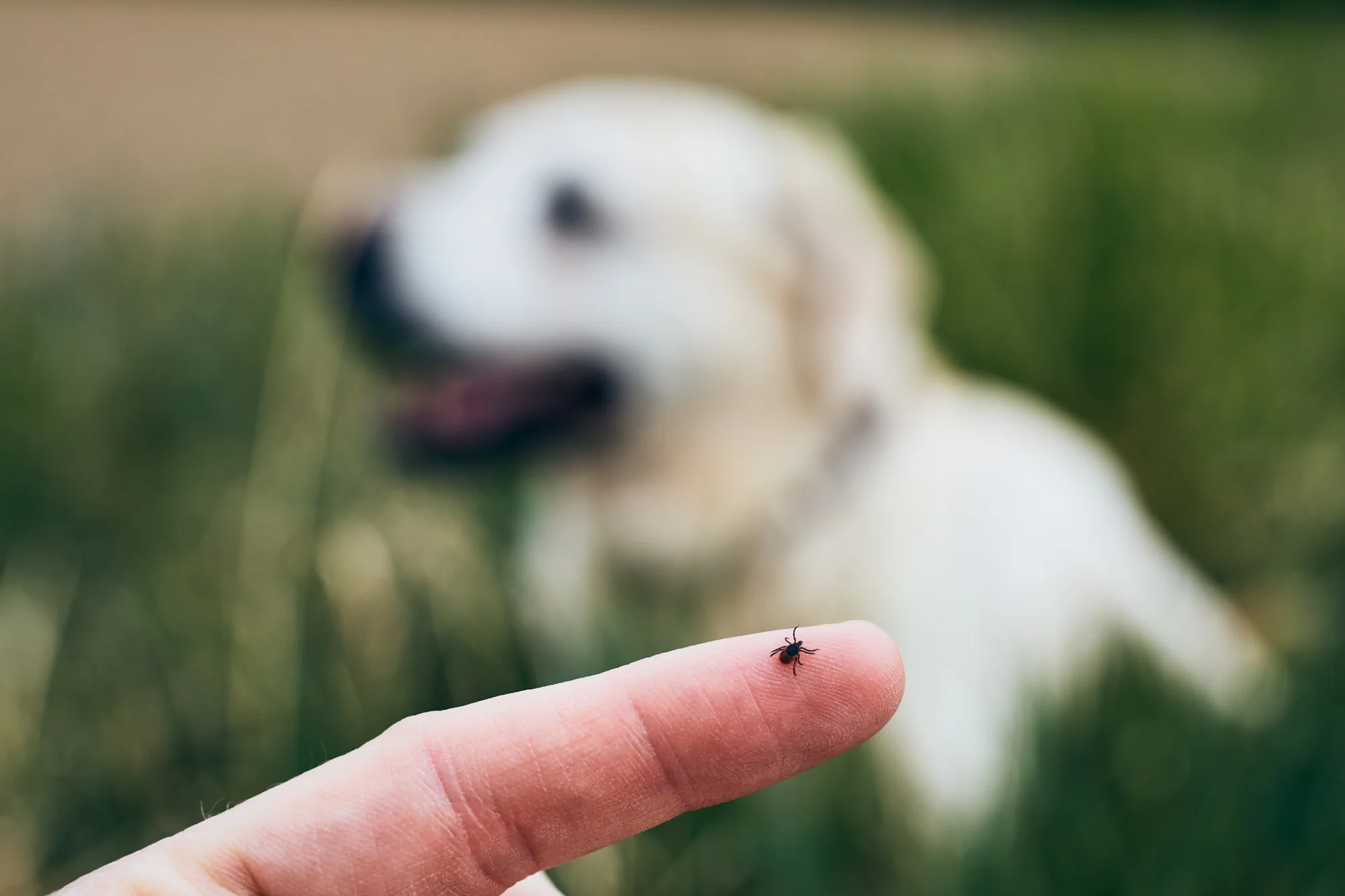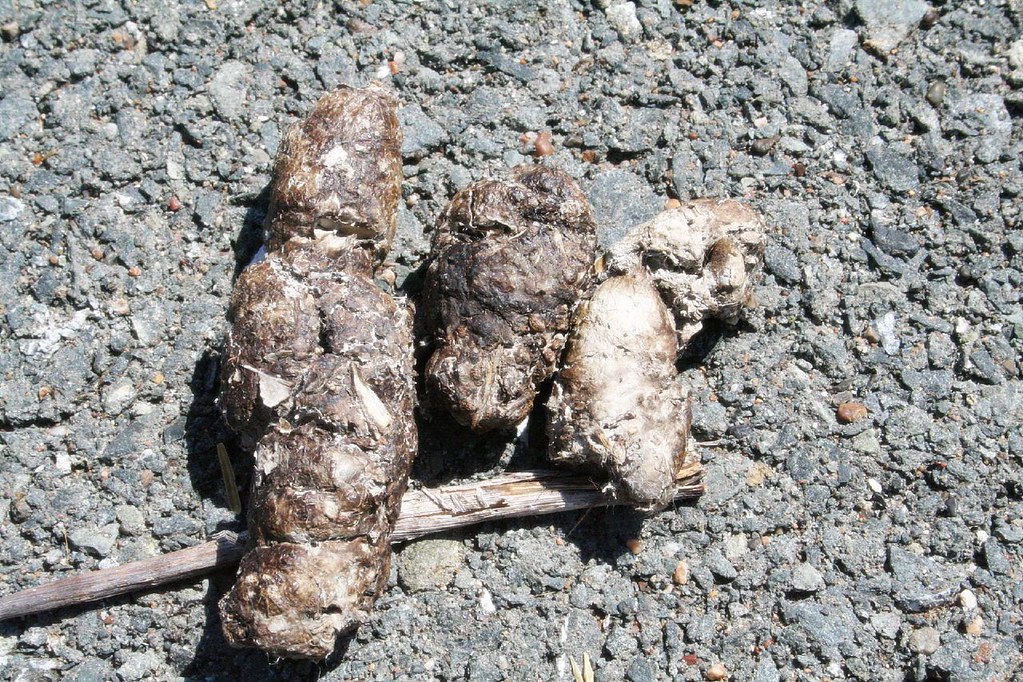What do I do if an engorged tick fell off my dog?
When you are trying to wake your dog out of its sleep You notice a small bump that is loose on the skin of your dog’s.
On closer examination when you examine it, you realise that it’s not a pebble, or a bit of kibble- it’s an actual tick!
You might have been thinking, “What do I do if an engorged tick fell off my dog?”
What you need to do first is to get rid of the tick by using ruby alcohol and to seal it up in the container of your vet to look at should it be necessary.
After that, you should conduct an extensive inspection of the pet’s body, and then remove any other ticks you discover.
After that, clean the site of the bite using disinfectants. You can also administer antibiotics in the event that your dog develops an infection.
Generally speaking, after your dog gets bit by ticks, it is likely to continue to live his day in the same way as usual. In less common instances, it could be bitten by ticks and develop red, inflamed skin.
In rare instances tick-borne diseases like Lyme disease may be passed to your pet. It usually happens during over the course of 48 hours.
It is crucial to observe your dog following the discovery and removing ticks , and also check for any indications of something more grave. Consult your vet immediately when you notice any changes in your dog’s behavior or appetite.
What Happens When An Engorged Tick Falls Off My Dog?
If an engorged, tick falls off in a dog, some dogs may suffer from red and inflamed skin, while others may not suffer any negative symptoms whatsoever. Within the first few hours, there shouldn’t be no major changes to your pet’s overall health.
How the tick when it is taken off will be largely dependent on the stage of its life cycle it is currently.
A majority of nymphs, larvae, along with some adults ticks cover themselves to finish off their bloody feast. When it’s completed its meal, ticks, larvae and nymphs develop and molt as they wait for food on their next host.
If a female tick is killed the ground, it might have laid eggs, and will more likely to be dead in a secluded location.
Adult male ticks usually disappear and die following mating. However, certain ticks, like those with brown dogs might live for some months longer.
If the tick is removed in relatively dry conditions like inside a house the tick will slowly lose water as it evaporates. After a couple of weeks, to a few months in dry conditions the tick is likely to die due to dehydration.
In some instances ticks, such as those of the dog breed can thrive in dry environments and consequently can create an infestation in your home.
Do Ticks Die When They Are Engorged?

It is extremely unlikely that ticks will die when they’re full of blood since they are asleep, feeding, or mating.
If the tick dies while it’s still engorged do not be worried and get rid of it. A dead tick usually doesn’t transmit any disease except if you bite it.
The ticks that have been engorged will usually end up dying when anti-tick treatments are applied. However, it is not recommended because the applications of the anti-tick products or Ointments may cause the tick to let out saliva carrying disease.
What Do You Do If You Find An Engorged Tick On Your Dog?
Big tick on a dog while clearing, Sucking dog blood as well as insects that spread pathogens.
If you discover one infected tick on your pet, chances are you’ll find more!
Look for ticks that may be on the dog’s body including around the torso, face and legs, the anal region, and so on. You can apply the tick comb or hair dryer to reveal any ticks present on your dog.
Once you have located the ticks, manually remove them with tweezers or other tick-specific tools.
Don’t use Vaseline or alcohol in the same way since this could cause the tick cling more strongly to the skin, or cause vomiting or saliva that could be carriers of diseases. It is also important not to scratch or burn the tick.
If you put off the removal of ticks that have become engorged this can increase the risk of disease that are transmitted by ticks to your pet.
Before beginning the removal process of the debris, prepare the tick kit, which includes items like:
- A tick remover like tweezers, tick twister, or tick key
- A container that can be used to store the tick for a short period or in small plastic bags
- The rub (isopropyl) alcohol
- Antibiotic or antiseptic Ointments
- Cotton balls
The gloves made of latex are recommended to wear throughout the day to ensure that liquids don’t get in your pores.
Which Antiseptic Product Should I Apply On my Dog?
BEXLEY LABS Curaseb Medical Chlorhexidine Spray to dogs & Cats and helps relieve skin Infections and Hot Spots and Paw Licking Acne, Allergies and Allergic Skin and has soothing Aloe Vera Veterinary Formula
Antiseptics are essential in preventing the growth of fungus and bacteria and thus reducing the chance of contracting an infection. If an engorged tick is able to fall off your pet and is left on the skin, it’s vulnerable to bacterial growth. This could result in a skin inflammation known as pyoderma.
To avoid such situations, Curaseb antiseptic spray is highly recommended. It will rid the body of bad bacteria, thus stopping infection and assisting you save on the expenses of a vet’s visit!
This product is appropriate for dogs because of many different reasons, including:
- It is a veterinary strength medicated solution
- Alcohol-free and doesn’t cause stinging wounds
- It contains vitamin E and aloe to calm skin irritations
- Made by the USA in small batches in controlled facilities to ensure the highest the highest quality
- Simple and fast to make use of
- Leaves a refreshing cucumber-melon scent
Alongside infections This product is also used to treat allergies, acne and hot spots on dogs and puppies, as well as for other pets like horses, kittens and cats.
With an 4.5 five stars rating from more than 14700 pet owners worldwide on Amazon This is an extremely recommended product for preventing infections from the bites of ticks!
To Remove The Tick From Your Dog:
1. Utilize tweezers to secure the body of the tick as close to your skin as you can. Then, gradually pull the tick out at the same angle it was into.
2. If any of the tick’s mouth pieces are stuck, take them out by using tweezers. If you’re not able to free the remaining parts you should consult your veterinarian as they might suggest leaving the tick alone.
3. Once the tick has been removed After the tick is removed, Apply soap and water or other disinfectants you can apply to the bite.
4. The tick should be wrapped in an airtight bag , and write down the date and the location where the bite occurred.
If you notice any unusual symptoms beginning to manifest it is possible to have the tick examined by the vet for any diseases it may be carrying. You may also capture a photo of the tick so that your vet can determine if there are any ailments that could be associated with specific species.
5. Get rid of this tick off by wrapping the tick in tape or submerging it in alcohol. It is not advised for flushing it into the drain as certain ticks will live and infest other areas.
6. Cut the hair that surrounds the bite of a tick as it makes it easier to identify any changes like the appearance of rashes or skin redness.
The tick of the Castor bean in the pliers
After you have removed the tick, you are able to:
- Use products to prevent ticks, such as tick and flea sprays or collars to your pet
- Vacuum your floor to eliminate any ticks in the area. Also, you can vacuum the area around walls, ceilings, and furniture.
- Employ pest control experts to eliminate all ticks in order to avoid a second outbreak if you notice ticks on your property.
In the coming days, be sure to monitor your dog’s behavior as well as temperature and appetite. If there are any changes then you must consult your veterinarian to determine whether your dog is suffering from one of the diseases ticks carry.
A thorough examination could reveal the presence of diseases including Lyme illness, encephalitis, or the piroplasmosis. These illnesses can be transmitted by ticks, and it can be present for at least 48 hours before disease can be completely spread.
Lyme disease is among the most prevalent conditions transmitted by ticks. It can trigger symptoms that include:
- Fever
- Lethargy
- A loss of appetite
- Stiffness
- Swollen joints
- Swollen lymph nodes
A variety of illnesses that can be transmitted through ticks is available at this Centres for Disease Control and Prevention page here.
To avoid tick-borne infestations in the future You can:
- Apply tick treatment like tick collars
- Make use of tick repellents such as diatomaceous Earth, an all-natural and non-toxic powder that repels ticks.
- Examine your dog regularly, especially at times when ticks are the most active like during warmer seasons.
- Get rid of or eliminate those areas where ticks are more likely to be infested.
- Regularly brush your dog’s coat using products like an a-tick combing
How Do You Kill An Engorged Tick?
A tick that is engorged inside a glove
It is not advisable to eliminate a tick that has become engorged as it’s still in the dog’s body as it is more likely to cling on the skin when it is aware of any risk. When it is in this condition it’s additionally more likely release saliva that could contain a variety of diseases.
If you are able, make an effort to manually take the tick off before taking it out.
A variety of methods of killing ticks following removal includes:
- By submerging an insect in alcohol rubbing can gradually eliminate the parasite
- Utilizing Tape: Wrapping the tick with tape could cause it to die due to the decomposition or suffocation
- Spraying or applying ticks
Temperature fluctuations are not likely to eradicate an engorged tick. However, flushing ticks down the toilet can permit it to live and spread to other areas.
In Conclusion
If you find an engorged tick that fell off your pet it is recommended to first take it off, and then eliminate the tick with tape, alcohol, or anti-tick products to stop it from becoming a re-infector to another animal or human.
Take a close look at your dog afterward, because there may be multiple ticks on your dog. If other ticks are discovered, eliminate immediately with tweezers.
If you can, have at minimum one tick inside the sealed container to ensure that in the event of any changes in your dog’s behavior or appetite in the coming days, your veterinarian will be able to check the tick for signs of illness.
The bites of ticks typically do not cause anything other than irritation and redness of the skin in dogs. But, it’s best to prepare for the worst event!





